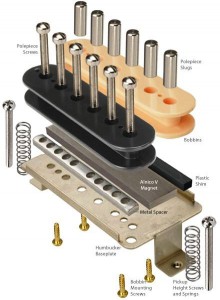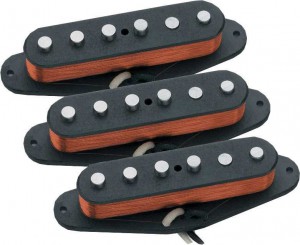

Happy New Year!

The last few months have been pretty quiet here at planetz, as I’ve been insanely slammed at work.
I have so many planetz projects started, but have had so little free time to finish anything. Hopefully that’ll improve in the coming months.
Here are some of my current projects that are either nearly done, on the way, or in the planning stages:
- a comprehensive audio/video comparison of the Vox AC15HW1 and AC15C1 amps
- a video how-to installing an on/off LED in a Proco RAT pedal while preserving true bypass
- lots of pedal DIY stuff including an overdrive pedal inspired by the Fulltone OCD
- some more guitar tweaking videos like push/pull pots, TOM bridge replacement, etc.
- a comprehensive audio/video comparison of pickup magnet types
- perhaps even some woodworking stuff- restoring an old rusty Rockwell band saw, building a set of drawers for the kids, etc
Wishing you all the best for a happy, healthy and prosperous 2011.
Rock on!
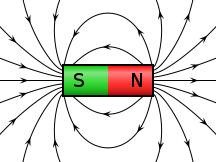
All About Pickup Magnets
This is an excellent article on guitar pickup magnets, how they work, magnet types and pickup construction, courtesy of Pete Biltoft at Vintage Vibe Guitars. Thanks Pete for the permission to post this here!
Update: also see Pete’s article on Alnico Magnets In Depth.
In addition to explaining the history and use of the various magnet types, this article also describes the differences in pickup construction between P-90’s, Fender-style single coils, blade pickups, and humbuckers.More
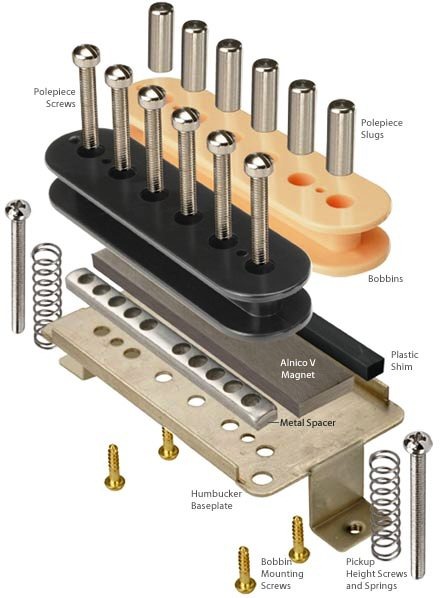
Splitting The Coils
Following up on my previous post about humbucker wiring, here is a quick look at how humbuckers work, and how to split the coils and use parallel wiring.
A humbucker pickup is really just a a pair of single-coils, electrically out of phase and magnetically reversed from each other. The two coils are wired in series, and the end result is that electromagnetic hum/noise is phase-cancelled.
You may have heard this idea referred to as RWRP – Reverse Wound, Reverse Polarity. With a humbucker, one of the coils is RWRP relative to the other.
On many Stratocaster style guitars (three single coils), the middle single coil pickup is RWRP relative to the other two pickups. So when you blend the middle pickup with the neck or bridge pickup, you get the same kind of hum cancellation you get with a humbucker.
It is possible to wire up a humbucker with a switch to allow you to isolate (“tap”, or “split”) one of the coils, silencing the other coil. Listening to one of the coils in isolation will achieve more of a strat-type single coil sound.
You can also wire up the two humbucker coils in parallel instead of in series, which will sound more like a pair of single-coils on a strat, rather than a single humbucker. You’ll still get hum cancellation, but you’ll get less output power than the series wiring- a unique and useful voicing you might like.
You can go crazy making your guitar über-flexible with switches and push/pull pots to control series/parallel and splitting. Check out the the humbucker circuit diagrams at GuitarElectronics.com
And here’s an article by Kevin Smith for more in-depth information on coil splitting: The Magnificent humbucker coil tap-coil/split
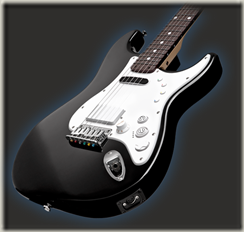
New Rock Band Squier Gets Release Date

I was interested to see that the guitar appears to have a standard MIDI port on the side, and will work as a MIDI controller outside the game.
It will be interesting to see how well this works for learning guitar, with the new Rock Band 3 “Pro” guitar mode. They say:
“Use the Squier by Fender Stratocaster Guitar and Controller in conjunction with Rock Band™ 3’s Trainer Modes to learn scales, chords, skills, drills and more.”
Fun fun fun!



